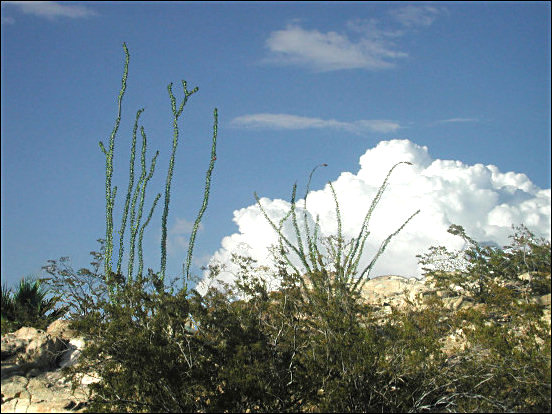

Desert dwellers constantly watch the sky, and even more so when clouds threatening rain appear. The ever present question is whether the clouds will continue to grow and rain, or whether, as is so often the case, the billowing clouds merely sail away, leaving dryness behind. Which, is the result of a struggle between opposing forces.
The process starts with a parcel of air having to act like a bubble in
water; it must be lighter than the surrounding medium. In air, this means hotter. The
problem is that as the bubble ascends, the air around it becomes less dense, the bubble
expands, and as a result, it cools. But at the same time, moisture begins to condense
out due to the cooling—and condensation releases heat. The race is on: will the
initial heat and that from cloud formation keep the air rising until cloud droplets
turn into rain drops or will the rising air stall, unable to keep itself hotter than
the surrounding atmosphere? And like any spectators at a race, we desert rats anxiously
await the outcome!

Listen to the Audio (mp3 format) as recorded by KTEP, Public Radio for the Southwest.
Contributor: Arthur H. Harris, Laboratory for Environmental Biology, Centennial Museum, University of Texas at El Paso.
Desert Diary is a joint production of the Centennial Museum and KTEP National Public Radio at the University of Texas at El Paso.

Thunderheads form as the heated air rises, cooling sufficiently for moisture to condense. Creosotebush and Ocotillo in foreground. Photograph by A.H. Harris.